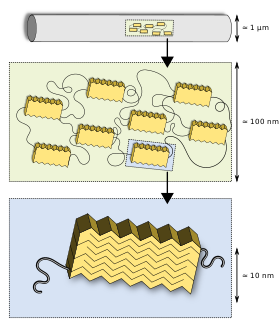Are you afraid of spiders? The creatures that crawl around on eight legs, waiting for their prey to be entangled in their webs that are stronger than steel, sinking their fangs into their victims, paralyzing them, and then eventually draining them dry?
It’s no wonder why many people hold such a disdain for spiders. The precision, skill, and creativity they employ to target their prey is something right out of a horror movie. If it wasn’t for their small sizes, there would certainly be many more people calling for their little arachnoid heads. However, these creatures have a very interesting aspect to them, which is the silk they produce.

Credit: Flickr: https://www.flickr.com/photos/130902927@N03/
Michael Podger
Uses of Spider Silk
“They’re absolute masters of using silk,” says Paul Selden, an arachnologist and paleontologist at the University of Kansas. Other creepy-crawlies make the stuff, too — silkworms use it to pupate in, some ants make nests from it — but, says Selden, “they don’t have the great variety of uses that spiders do.”
There are many ways that spiders use their silk. This ranges from using it to catch prey, to to wind up prey with the setae on their feet, to travel using a method called ballooning (using their silk like a parachute to catch the wind and land far away), to keep from getting lost, to take shelter, to mate using specialized sperm webs, to protect their eggs, and even to create underwater homes.
Credit to Stefan Hetz: Spider underwater in its webbed air bubble hunting for water bugs
Silk Control
Spiders have various types of silk they can produce: specified for building their webs, entangling their prey, creating egg sacs, ballooning into the distance, or various other tasks to be done with their silk. This is done by utilising the silk glands of which spiders can have two to eight of depending on the species. Each of these glands produces a different property of silk such as sticky, strong, or flexible. Spiders can access any combination of such types of silk using the spinneret. Although many people have the misconception that spinneret is a single orifice producing a single thread, it consists of many microscopic spigots, each producing one filament to combine into a larger thread. By shooting out certain combinations of silk, they are able to produce the specialized version of the silk that they require for what they want to accomplish.

Video explaining how a spider makes its silk
Biomechanics of Spider Silk
You may have heard people say that spider silk is stronger than steel, and you’ve probably questioned it as well. How could it be true that those flimsy webs are stronger than steel? However, it is true that spider silk is 5x stronger than steel of the same diameter. It has even been suggested that the commercial aircraft Boeing 747 could be stopped in flight by a single pencil width strand. Spider silk is even tougher than Kevlar: the toughest man-made polymer which is used to create bulletproof vests.
So what exactly gives spider silk such strength? The answer lies within its polymeric structure. Spider silk is a semi-crystalline structure, which means that it contains both crystalline and amorphous phases. Thus it exhibits both the durability of crystalline structures and the flexibility of amorphous structures. Although scientists have yet to fully comprehend the biomechanics behind spider silk, research is being done about its structure and how it is made because it could have many implications to lives today. For example, new material exhibiting properties similar to spider silk would be both extremely strong and also flexible, which could be key to designing new types of particle accelerators, spacecraft, and simply strengthening existing products.

Credit Wikimedia: Chen-Pan Liao
Showing the structure of spider silk: inside a fibre there exists crystalline (beta sheets) regions (yellow blocks) separated by amorphous linkages.
Perhaps next time you are about to squish a spider, you’ll remember that spiders are friends. Not only do they get rid of more irritating bugs for us, they also produce some of the most sophisticated substances on the planet, which could be beneficial to society in the future. So I ask again, are you afraid of spiders?
-Jin Kyu Lee


One response to “Sticky Science: All About Spider Silk”